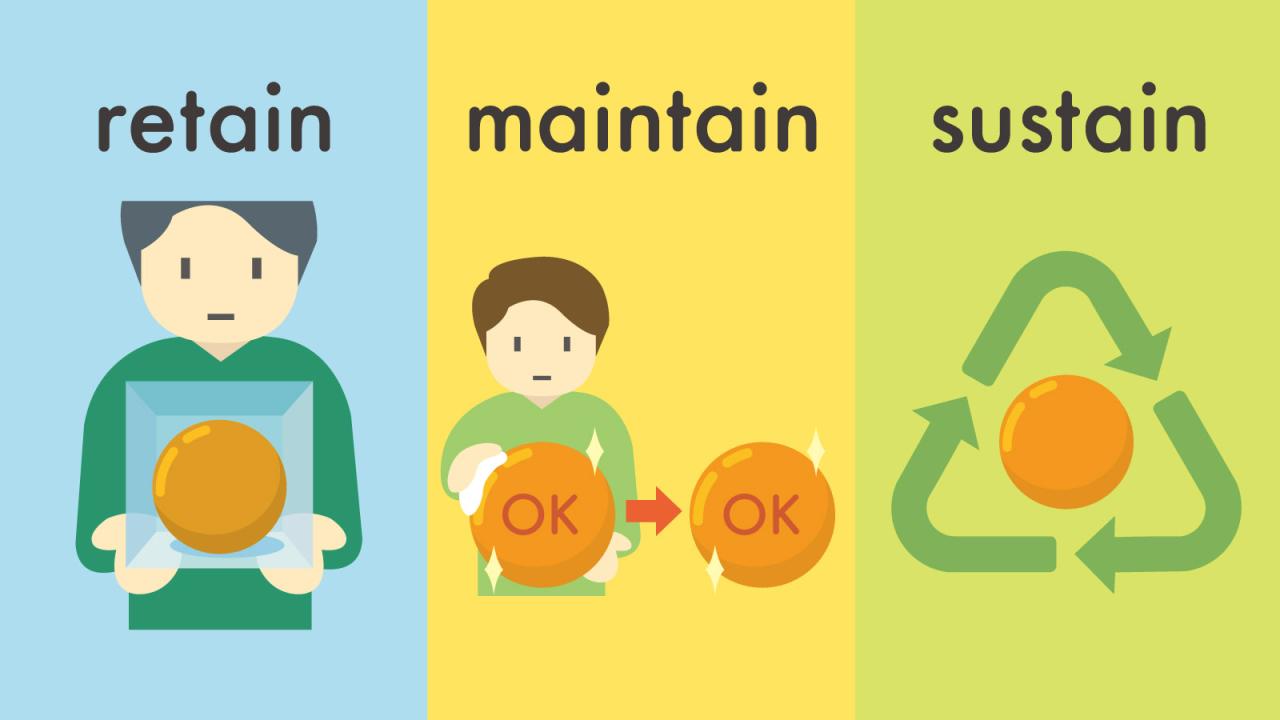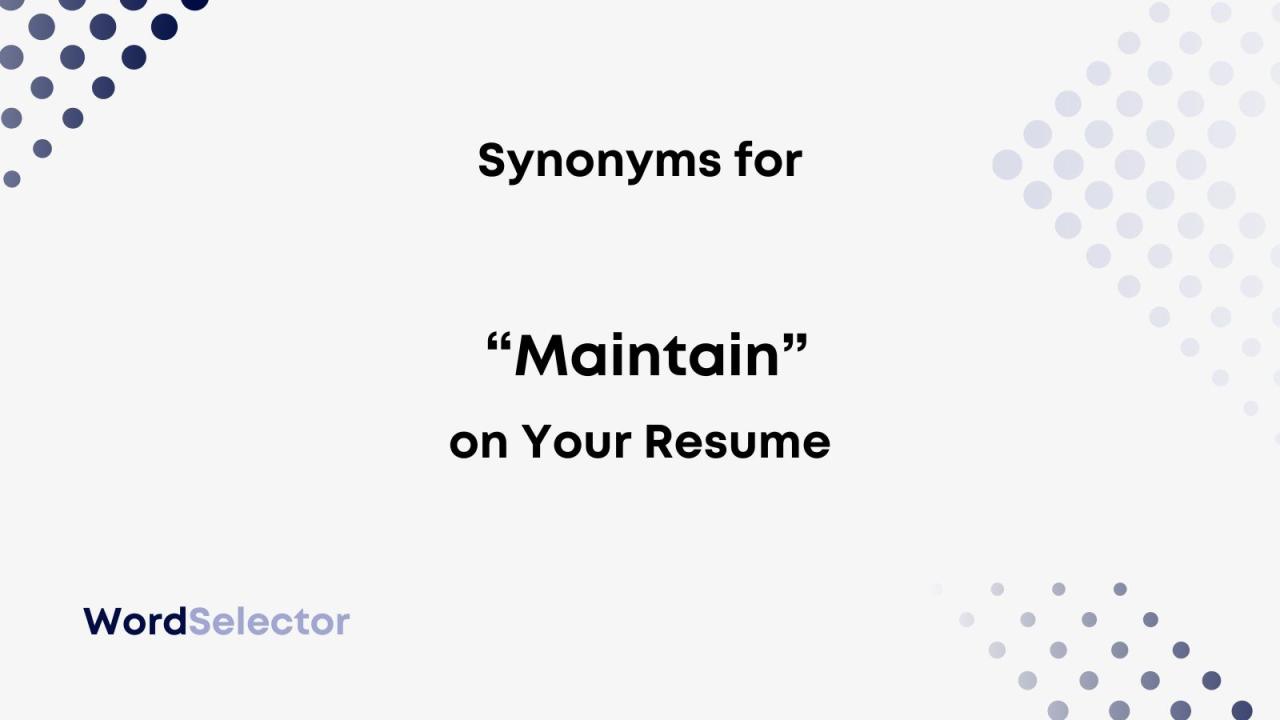Maintaining optimal water quality is paramount for the health and well-being of your aquarium inhabitants. This comprehensive guide delves into the essential aspects of aquarium water management, from testing and monitoring to filtration, water changes, and the impact of your fish. Understanding these factors will ensure a thriving and vibrant aquatic ecosystem.
This guide will walk you through each critical step, providing practical advice and actionable strategies. From the initial setup to ongoing maintenance, you’ll gain a deep understanding of how to nurture a healthy and balanced aquarium environment.
Introduction to Aquarium Water Quality Maintenance

Maintaining proper water parameters in an aquarium is crucial for the health and well-being of aquatic inhabitants. A healthy aquarium environment fosters vibrant fish, thriving plants, and a visually appealing ecosystem. Neglecting water quality can lead to stress, disease, and even death for the fish. This section will detail the key factors affecting water quality, the consequences of poor quality, and the common problems encountered.Aquarium water quality is influenced by a complex interplay of factors.
These factors range from the biological processes within the tank to the physical characteristics of the water itself. Understanding these factors is essential for establishing and maintaining a healthy environment for your aquatic pets. Poor water quality can manifest in various ways, affecting the fish’s overall health, behavior, and lifespan. Recognizing and addressing these issues promptly is key to preventing serious consequences.
Key Factors Affecting Aquarium Water Quality
Water quality is a multifaceted concept. Several factors contribute to the overall health of an aquarium environment. These factors include: filtration, substrate, and water changes, along with the presence of fish waste and other organic matter. Maintaining a balance among these elements is essential for a thriving ecosystem.
- Filtration: Proper filtration is vital for removing solid waste, uneaten food, and excess nutrients. A well-functioning filter helps maintain a healthy balance in the aquarium’s biological processes.
- Substrate: The substrate, or the material at the bottom of the aquarium, can influence water quality. Some substrates release nutrients into the water, while others help maintain a stable environment.
- Water Changes: Regular water changes are essential for removing accumulated waste products and replenishing essential minerals. The frequency and amount of water changes depend on the tank size, stocking level, and filtration efficiency.
- Fish Waste and Organic Matter: Fish waste and uneaten food contribute to the accumulation of organic matter in the water. This organic matter decomposes, releasing harmful toxins into the water, affecting water quality.
Consequences of Poor Water Quality on Fish Health
Poor water quality can have a detrimental impact on the health and well-being of aquarium fish. Early detection and intervention are crucial to preventing serious problems.
- Stress: Poor water quality can cause stress in fish, making them more susceptible to diseases and affecting their overall health.
- Disease: Unfavorable water parameters can weaken fish immune systems, making them vulnerable to various diseases.
- Behavioral Changes: Changes in behavior, such as lethargy, loss of appetite, and erratic swimming patterns, can indicate problems with water quality.
- Fin Rot and Other Infections: Poor water quality can lead to fin rot, fungal infections, and other debilitating conditions.
Common Water Quality Problems in Aquariums
Several common problems can affect aquarium water quality. Addressing these issues promptly is vital for maintaining a healthy environment.
- Ammonia Spikes: Ammonia, a byproduct of fish waste, can reach toxic levels if not properly managed.
- Nitrite Accumulation: Nitrite, another byproduct of the nitrogen cycle, can be harmful to fish at elevated levels.
- Nitrate Buildup: While not as immediately toxic as ammonia or nitrite, excessive nitrates can lead to poor water quality.
- pH Fluctuations: Sudden changes in pH can significantly stress fish and disrupt the delicate balance of the aquarium environment.
Water Parameter Ranges and Effects of Deviation
Maintaining ideal water parameters is crucial for fish health. The following table Artikels the ideal ranges for key parameters and the potential effects of deviations.
| Water Parameter | Ideal Range | Effects of Deviation |
|---|---|---|
| Ammonia | 0 ppm | High levels can cause ammonia poisoning, leading to death. |
| Nitrite | 0 ppm | High levels are toxic to fish, causing nitrite poisoning. |
| Nitrate | 20-40 ppm | High levels can lead to reduced oxygen levels, impacting fish health. |
| pH | 6.5-7.5 | Significant deviations from the ideal range can stress fish and affect their health. |
| Temperature | 72-78°F (22-26°C) | Temperature fluctuations can stress fish and disrupt their metabolic processes. |
Water Testing and Monitoring

Maintaining optimal water quality in an aquarium is crucial for the health and well-being of your aquatic inhabitants. Regular water testing is essential for identifying potential problems and allowing for timely interventions. This proactive approach ensures that the aquarium environment remains stable and conducive to a thriving ecosystem.
Methods for Testing Aquarium Water Parameters
Accurate water testing is a cornerstone of effective aquarium maintenance. Several methods are available for measuring various parameters. Chemical tests, utilizing colorimetric reagents, are widely employed. These tests rely on the change in color of the reagent in contact with the water sample, correlating with the concentration of the target parameter. A drop of water is added to a reagent solution; the resulting color change is compared to a color chart to determine the level of the substance.
Another common method involves using electronic devices, like digital test strips or meters. These tools often utilize electrochemical sensors to measure the parameters directly, providing quick and precise readings. The data obtained can be displayed digitally, which is generally easier to read and interpret than color charts.
Importance of Regular Water Testing
Regular water testing is indispensable for preventing and resolving water quality issues in your aquarium. Unmonitored changes in parameters can lead to stress, illness, or even death in your fish. By regularly checking parameters, you can identify and address problems before they escalate. Early detection allows for timely adjustments and maintenance to restore the ideal environment. Maintaining consistency in the water parameters ensures the health and well-being of your fish.
Recommended Water Testing Kits and Their Uses
A variety of water testing kits are available, each designed for specific parameters. Choosing the right kit depends on the parameters you wish to monitor. For instance, a comprehensive kit often includes tests for ammonia, nitrite, nitrate, pH, and hardness. Alternatively, individual kits can target specific parameters, allowing for focused monitoring. Specific kits can focus on testing only ammonia or nitrite levels, or other parameters, providing targeted data.
- Ammonia Test Kits: These kits are crucial for detecting ammonia, a highly toxic substance produced by fish waste and decomposition. High ammonia levels can harm or kill fish quickly, making regular testing paramount. The ammonia test kit should be used to identify and manage ammonia levels promptly.
- Nitrite Test Kits: Nitrite is another toxic byproduct of the nitrogen cycle. Nitrite levels must be monitored closely to ensure they remain within safe limits. High nitrite levels can also cause serious health problems in fish, making regular testing crucial.
- Nitrate Test Kits: Nitrate, while less toxic than ammonia or nitrite, can still accumulate to levels that negatively affect fish health. Monitoring nitrate levels is vital for maintaining a healthy balance. Regular testing allows for adjustments to maintain a healthy nitrate level in the aquarium.
- pH Test Kits: pH is a measure of acidity or alkalinity in the water. The appropriate pH range varies depending on the species of fish in your aquarium. Regular pH testing is essential for maintaining the optimal environment for your fish.
- Hardness Test Kits: Water hardness is measured in terms of calcium and magnesium content. Different fish species have different hardness requirements. Testing and maintaining appropriate hardness levels is vital for the health and well-being of your fish.
Water Parameter Testing Schedule
A consistent testing schedule is crucial for proactively managing water quality. The frequency of testing depends on the specific needs of your aquarium and the health of your fish. New aquariums require more frequent testing, particularly during the initial cycling phase, while established aquariums can often be tested less frequently.
- New Aquariums: Test daily or every other day during the initial cycling phase, and then gradually reduce frequency to weekly. This ensures that you can catch and address issues promptly.
- Established Aquariums: Test weekly, or even bi-weekly, if the water parameters remain stable. Adjust testing frequency based on any noticeable changes in the aquarium’s environment.
Water Testing Methods and Accuracy
The accuracy of different water testing methods varies. It’s essential to choose a method appropriate for the desired level of precision.
| Testing Method | Accuracy Level | Description |
|---|---|---|
| Colorimetric Test Kits | Moderate | These kits use color changes to estimate parameter levels. Accuracy depends on the quality of the kit and the user’s ability to match colors. |
| Digital Test Strips | High | These strips provide numerical readings of parameters, often with higher precision than colorimetric methods. |
| Digital Meters | High | These meters provide the most accurate measurements of various parameters, offering a direct digital reading. |
Maintaining Water Chemistry

Maintaining the precise chemical balance of your aquarium water is crucial for the health and well-being of your aquatic inhabitants. A stable water chemistry environment reduces stress on fish, promotes healthy growth, and prevents diseases. Understanding the key water parameters and how to control them will ensure a thriving aquatic ecosystem.
Ammonia
Ammonia, a toxic byproduct of fish waste and uneaten food, is a primary concern in aquarium maintenance. High ammonia levels can quickly harm or kill fish. Ammonia is immediately toxic to fish and other aquatic life.
- Ammonia, in its most toxic form, is a critical parameter to monitor closely.
- The ideal range for ammonia is 0 ppm (parts per million). Any detectable amount is considered a problem. Even trace amounts can be problematic for sensitive species.
- Control methods include regular water changes, thorough cleaning of the aquarium and filter media, and appropriate stocking levels.
Nitrite
Nitrite, a toxic intermediate product in the nitrogen cycle, is a significant concern for fish health. If ammonia isn’t promptly converted, nitrite will accumulate.
- Maintaining nitrite levels below 0.5 ppm is essential.
- High nitrite levels can lead to significant health issues in fish, including respiratory distress, fin rot, and death.
- Controlling nitrite levels involves maintaining a healthy nitrogen cycle. This means providing sufficient beneficial bacteria in the filter and ensuring appropriate water changes.
Nitrate
Nitrate, a less toxic end-product of the nitrogen cycle, is still a concern if levels get too high. While less harmful than ammonia or nitrite, high nitrate levels can contribute to algae growth and negatively affect fish health.
- The ideal range for nitrate is generally below 20 ppm, but some species can tolerate higher levels.
- Frequent water changes are crucial for reducing nitrate levels. The frequency of water changes depends on the stocking density, feeding habits, and the efficiency of the filtration system.
- Regular testing and monitoring are key to keeping nitrate levels under control.
pH
The pH of aquarium water reflects the water’s acidity or alkalinity. Maintaining a stable pH is vital for fish health.
- The ideal pH range for most freshwater fish is between 6.0 and 7.5.
- Fluctuations in pH can cause stress and damage to fish, leading to health problems.
- Adjusting pH involves using specialized aquarium chemicals, like pH buffers or pH up/down solutions, following the manufacturer’s instructions carefully. Sudden changes in pH are more harmful than maintaining a consistent, slightly outside ideal range.
Water Conditioners and Dechlorinators
Water conditioners and dechlorinators are essential for removing harmful chemicals from tap water.
- Tap water often contains chlorine, chloramine, and other chemicals that are harmful to fish.
- Water conditioners neutralize these chemicals, making the water safe for your fish.
- Dechlorinators specifically target chlorine, while water conditioners target chlorine and chloramine. Always follow the manufacturer’s instructions for dosage and use.
Effects of Water Parameters on Fish Health
| Water Parameter | Ideal Range | Effects of High Levels | Effects of Low Levels |
|---|---|---|---|
| Ammonia | 0 ppm | Severe stress, fin rot, death | None (ideal) |
| Nitrite | < 0.5 ppm | Respiratory distress, fin rot, death | None (ideal) |
| Nitrate | < 20 ppm | Algae blooms, stress | None (ideal) |
| pH | 6.0 – 7.5 (freshwater) | Stress, loss of appetite, death | Stress, loss of appetite, death |
Filtration Systems
Maintaining optimal water quality in an aquarium relies heavily on a robust filtration system. Proper filtration removes waste products, reduces harmful toxins, and promotes a healthy environment for your aquatic pets. Different filtration types offer varying degrees of effectiveness, and understanding their capabilities is crucial for aquarium success.
Types of Aquarium Filters
Aquarium filtration systems come in various forms, each with its own strengths and weaknesses. Understanding these differences helps in selecting the best filtration for your specific aquarium setup. Common types include canister filters, hang-on filters, and sponge filters.
- Canister Filters are often preferred for larger aquariums due to their high capacity and efficiency. They typically offer superior filtration, removing a significant amount of debris and maintaining water clarity. These filters are generally housed outside the aquarium, providing more space within the tank itself. Examples include the Eheim canister filters, which are well-regarded for their performance.
- Hang-on Filters are convenient, especially for smaller aquariums. Their compact design makes them suitable for smaller tanks and are often simple to install. They are typically mounted on the back or side of the tank. These filters are adequate for smaller setups but may struggle to maintain the water quality of larger tanks.
- Sponge Filters are a simple and budget-friendly option, particularly for smaller aquariums. They rely on a porous sponge to trap debris, and are often effective for basic filtration needs. The low cost makes it a viable option for beginners.
Filter Effectiveness Comparison
The effectiveness of each filter type varies significantly. Canister filters are generally considered superior for larger aquariums, providing a higher filtration capacity and reducing the frequency of water changes. Hang-on filters are adequate for smaller tanks, but may require more frequent maintenance to maintain optimal water quality. Sponge filters are best for smaller tanks and simpler setups, where basic filtration is sufficient.
Importance of Regular Filter Maintenance
Regular filter maintenance is crucial for optimal water quality. Accumulated waste and debris can reduce the filter’s efficiency, leading to water quality issues. Consistent cleaning and media replacements are essential to maintain the filter’s effectiveness. Failure to maintain the filter can lead to the accumulation of harmful substances and potential health issues for your fish.
Filter Media Choices
Different filter media are used to enhance filtration and water quality. Activated carbon is commonly used to remove impurities and odors from the water. Ceramic rings provide a large surface area for beneficial bacteria to grow, promoting a healthy biological filtration process. Different filter media provide different benefits, so the choice depends on the specific needs of the aquarium.
Cleaning and Replacing Filter Media
Cleaning and replacing filter media is essential for maintaining filtration effectiveness. Cleaning involves removing debris and rinsing the media to remove accumulated waste. Replacing filter media, especially activated carbon, is necessary on a regular basis to maintain its effectiveness in removing impurities. Following the manufacturer’s instructions is crucial for ensuring optimal results.
Filter Type Comparison Table
| Filter Type | Pros | Cons |
|---|---|---|
| Canister | High capacity, effective filtration, suitable for large aquariums, often housed outside the tank. | More complex setup, potentially more expensive. |
| Hang-on | Simple setup, relatively affordable, suitable for smaller tanks. | Lower filtration capacity, may require more frequent maintenance, not ideal for larger aquariums. |
| Sponge | Simple design, budget-friendly, suitable for smaller tanks. | Lower filtration capacity, not suitable for large tanks, requires frequent maintenance. |
Water Changes

Regular water changes are crucial for maintaining a healthy aquarium environment. They remove accumulated waste products, excess nutrients, and harmful toxins that can build up over time, negatively impacting the health and well-being of your aquatic inhabitants. Proper water changes help to maintain optimal water parameters, ensuring a stable and thriving ecosystem within your aquarium.
Importance of Regular Water Changes
Regular water changes are essential for maintaining healthy water quality. They help remove harmful metabolic waste products like ammonia and nitrite, which can be toxic to fish and other aquatic life. These changes also dilute accumulated nitrates, which can also become problematic at high concentrations. Furthermore, they replenish essential minerals and trace elements that are gradually depleted through biological processes and fish activity.
This replenishment helps maintain optimal water parameters, crucial for the health and well-being of your aquarium’s inhabitants.
Water Change Schedule
Establishing a consistent water change schedule is vital for aquarium maintenance. A well-defined schedule ensures that water quality remains optimal and prevents the buildup of harmful substances. The frequency of water changes depends on factors such as aquarium size, stocking levels, filtration efficiency, and the overall health of the aquatic life.
Water Change Volume
The volume of water to change per cycle varies depending on the size of the aquarium. For a smaller aquarium (e.g., 10 gallons), a partial water change of 25% to 50% once or twice a week is generally recommended. Larger aquariums (e.g., 55 gallons or more) may require a 25% water change weekly or bi-weekly, depending on the stocking level.
The volume of water changed should be carefully calculated based on the tank’s size and the needs of the fish.
Water Change Procedure
A systematic procedure for water changes is essential for maintaining water quality and minimizing stress on your aquatic pets. First, prepare a clean and well-lit work area, gather all necessary equipment (e.g., a siphon, buckets, dechlorinator). Then, carefully siphon out the appropriate amount of water from the aquarium into the prepared bucket. Next, prepare the replacement water by using a dechlorinator to remove chlorine and chloramine.
Finally, gently add the dechlorinated water back into the aquarium, ensuring an even distribution. Properly following the procedure reduces stress and disturbance to your fish.
Benefits of Using Dechlorinated Water
Using dechlorinated water is critical for preventing harm to your aquarium inhabitants. Chlorine and chloramine, common disinfectants in tap water, can be harmful to fish and other aquatic life. Dechlorinators neutralize these harmful chemicals, making the water safe for your pets. Dechlorinated water ensures that the water parameters are optimal, and your fish and other inhabitants are not exposed to harmful chemicals.
Water Change Schedule Table
This table provides a general guideline for water change schedules based on aquarium size and stocking levels. Adjustments may be necessary based on specific circumstances.
| Aquarium Size (Gallons) | Stocking Level | Water Change Schedule |
|---|---|---|
| 10-20 | Low | 25% weekly |
| 10-20 | Medium | 25% bi-weekly |
| 10-20 | High | 50% weekly |
| 20-55 | Low | 25% bi-weekly |
| 20-55 | Medium | 33% bi-weekly |
| 20-55 | High | 50% bi-weekly |
| 55+ | Low | 25% monthly |
| 55+ | Medium | 33% monthly |
| 55+ | High | 50% monthly |
Aquarium Inhabitants and Their Impact

Maintaining optimal water quality in an aquarium hinges significantly on understanding the impact of its inhabitants. Different fish species, their metabolic rates, and stocking density all contribute to the chemical and biological makeup of the water. This section explores these relationships, highlighting the importance of appropriate fish stocking and the potential for water quality issues stemming from improper choices.
Waste Production Rates of Various Fish Species
Fish waste, primarily ammonia and nitrite, is a significant contributor to water quality degradation. The rate at which fish produce waste varies considerably between species. Larger fish, active species, and those with higher metabolic rates produce more waste than smaller, less active ones. Understanding these differences is critical for selecting suitable tank mates and maintaining adequate filtration.
For instance, a school of small, peaceful tetras will generate less waste than a single large cichlid.
Impact of Fish Stocking Density on Water Parameters
Stocking density, the number of fish per gallon of water, is a crucial factor influencing water parameters. Higher stocking densities lead to a faster accumulation of waste products, which can quickly overwhelm the filtration system’s capacity to remove them. This, in turn, can lead to spikes in ammonia and nitrite, potentially causing health issues or even death for the fish.
A well-maintained aquarium with adequate filtration can handle a higher density of small, less demanding fish compared to a larger number of larger, more active species.
Importance of Appropriate Fish Stocking
Appropriate fish stocking is vital for maintaining healthy water quality. Choosing compatible species with similar water parameter requirements and temperament is paramount. Consider the size, activity level, and temperament of each fish species before adding them to the tank. A balanced community of fish with varying needs can create a more sustainable and stable environment, preventing the rapid degradation of water quality.
Overstocking can create a stressful environment, and inadequate filtration is not an acceptable solution to this issue.
Examples of How Different Fish Species Can Contribute to Water Quality Issues
Certain fish species are more prone to generating excessive waste, leading to water quality problems. For example, large cichlids produce more waste than small, peaceful schooling fish. Aggressive species can also disrupt the natural balance, leading to injuries or stress in other fish. The presence of decomposing food or uneaten food also contribute to the increase in waste production.
Careful consideration of species compatibility and proper feeding habits is crucial for preventing these issues.
Table of Fish Species and Their Water Quality Needs
This table provides a general overview of the water quality needs of different fish species. Note that these are general guidelines and specific needs may vary based on the individual fish and the particular aquarium environment.
| Fish Species | Water Quality Needs (General) | Waste Production Rate (General) |
|---|---|---|
| Neon Tetras | Mildly acidic, soft water | Low |
| Goldfish | Neutral to slightly alkaline, moderate water hardness | Medium |
| Cichlids (e.g., Oscars) | Neutral to slightly alkaline, hard water | High |
| Angelfish | Mildly acidic, soft water | Medium |
| Betta Fish | Mildly acidic, soft water | Low to Medium |
Troubleshooting Common Water Quality Issues
Maintaining optimal water quality in an aquarium is crucial for the health and well-being of your aquatic inhabitants. Addressing problems promptly and effectively can prevent stress, disease, and even fatalities. This section details common water quality issues, their potential causes, solutions, and preventive measures.Understanding the causes and solutions to these issues allows proactive management and ensures a thriving aquatic environment.
Regular monitoring and prompt action are key to maintaining a healthy aquarium.
Cloudy Water
Cloudy or milky water is a common problem in aquariums. It often indicates a disruption in the water’s clarity, potentially stemming from various factors. Accumulation of uneaten food, decaying organic matter, or the introduction of excessive materials can contribute to this issue.
- Possible Causes: Insufficient or inadequate filtration, overfeeding, recent water changes with unsuitable water parameters, introduction of new fish or plants, or a build-up of organic waste.
- Solutions: Increase the filtration rate, reduce feeding quantities, perform regular water changes, and ensure the water parameters are suitable for the fish. Consider a temporary filter media to remove suspended particles.
- Prevention: Maintain a consistent feeding schedule, use appropriate filtration, and monitor water parameters regularly. Acclimatize new additions slowly. Regular partial water changes will help in maintaining water quality.
Algae Blooms
Excessive algae growth is a prevalent issue, often signaled by a proliferation of green, brown, or black algae. This phenomenon is commonly caused by an imbalance in the aquarium’s environment. Nutrient overabundance, inadequate lighting, and a lack of sufficient filtration can be contributing factors.
- Possible Causes: Overfeeding, excess nutrients (phosphates and nitrates), inadequate lighting, insufficient water changes, or overstocking of the aquarium. Rapid changes in water temperature or light cycles can also lead to algae blooms.
- Solutions: Reduce feeding amounts, perform regular water changes, improve filtration, and adjust the lighting schedule. Consider using algae-eating species as a biological control, but only if appropriate for the aquarium inhabitants.
- Prevention: Maintain a balanced diet for your fish, monitor nutrient levels (phosphates and nitrates), adjust lighting duration to optimize growth conditions, and practice responsible stocking.
Ammonia Spikes
Ammonia spikes are hazardous to aquarium inhabitants, resulting from insufficient or overloaded filtration. This often occurs due to rapid decomposition of organic matter.
- Possible Causes: Overfeeding, overcrowding, poor water quality, and insufficient filtration capacity.
- Solutions: Increase the filtration rate, reduce feeding quantities, perform regular water changes, and consider using ammonia-removing products if necessary.
- Prevention: Consistent monitoring of ammonia levels is critical. Regular water changes and proper filtration can help prevent these spikes.
Table of Common Water Quality Issues and Solutions
| Issue | Possible Causes | Solutions | Prevention |
|---|---|---|---|
| Cloudy Water | Insufficient filtration, overfeeding, organic waste | Increase filtration, reduce feeding, regular water changes | Consistent feeding, proper filtration, monitoring water parameters |
| Algae Blooms | Nutrient imbalance, inadequate lighting, overstocking | Reduce feeding, improve filtration, adjust lighting, use biological control (if appropriate) | Balanced diet, monitoring nutrient levels, appropriate lighting, responsible stocking |
| Ammonia Spikes | Overfeeding, overcrowding, poor filtration | Increase filtration, reduce feeding, regular water changes | Regular monitoring, appropriate stocking, regular water changes |
Maintaining Healthy Aquarium Environment
Maintaining a healthy aquarium environment is crucial for the well-being of your aquatic inhabitants. A thriving aquarium ecosystem relies on a delicate balance of various factors, including water parameters, filtration, and the introduction of appropriate species. Proper maintenance of these factors promotes the overall health and longevity of your fish and plants.
Importance of Proper Water Temperature
Maintaining the appropriate water temperature is essential for the health and well-being of aquarium inhabitants. Different fish species have specific temperature requirements for optimal growth, reproduction, and overall health. Fluctuations in water temperature can cause stress, disease, and even death in sensitive species. Consistency in water temperature is key to providing a stable and comfortable environment for your fish.
Ideal Temperature Ranges for Different Fish Species
Various fish species thrive within specific temperature ranges. Understanding these ranges is critical for providing a suitable environment. Fish that originate from warmer climates, such as tropical regions, require higher temperatures than those from cooler environments. For example, some South American cichlids thrive in water temperatures ranging from 78°F to 82°F (26°C to 28°C), whereas goldfish are comfortable in temperatures between 65°F and 75°F (18°C to 24°C).
Accurate temperature monitoring and adjustments are necessary to maintain a healthy aquarium.
Methods to Maintain Consistent Water Temperature
Maintaining a consistent water temperature is achievable through several methods. A reliable aquarium heater is a crucial component for maintaining the desired temperature. Regular monitoring with a thermometer is essential to detect any fluctuations. Acclimating new fish and plants to the existing water temperature gradually minimizes stress. Placing the aquarium in a stable location, away from drafts and direct sunlight, is also beneficial in preventing temperature variations.
Importance of Appropriate Lighting
Appropriate lighting is vital for the overall health of aquarium inhabitants, including both fish and plants. Sufficient lighting promotes the growth of beneficial aquatic plants, which in turn contribute to a balanced ecosystem. For fish, proper lighting can minimize stress and maintain a natural visual environment. Insufficient lighting can lead to stunted plant growth and can also affect the behavior of certain fish species.
Furthermore, improper lighting can result in increased algae growth.
Importance of Proper Aeration and Oxygenation
Proper aeration and oxygenation are critical for maintaining a healthy aquarium environment. Fish, like all living organisms, require oxygen to survive. Adequate aeration ensures that the water is adequately oxygenated. Insufficient oxygen can lead to fish gasping for air at the surface, and even death. The presence of aquatic plants also plays a role in oxygenation, producing oxygen through photosynthesis.
Appropriate filtration systems can also enhance oxygenation by circulating water and introducing oxygen from the air.
Ideal Water Temperature Ranges for Various Fish Species
| Fish Species | Ideal Temperature Range (°F) | Ideal Temperature Range (°C) |
|---|---|---|
| Goldfish | 65-75 | 18-24 |
| Tropical Betta | 76-82 | 24-28 |
| South American Cichlids | 78-82 | 26-28 |
| Discus Fish | 82-86 | 28-30 |
| Angelfish | 78-82 | 26-28 |
| Rainbowfish | 74-78 | 23-26 |
Last Recap
In conclusion, maintaining aquarium water quality is a continuous process requiring attention to detail and a proactive approach. By understanding the crucial elements of testing, water chemistry, filtration, and water changes, you can create an environment where your fish thrive. This comprehensive guide has provided the essential tools and knowledge to achieve this, ensuring a healthy and beautiful aquarium experience.